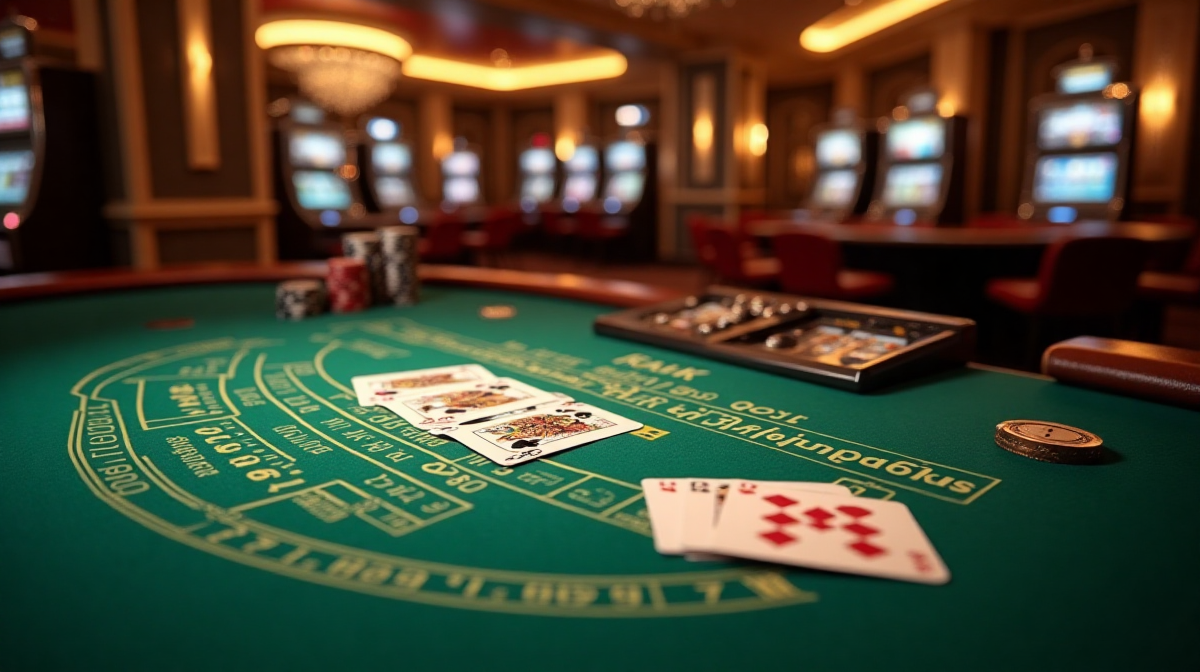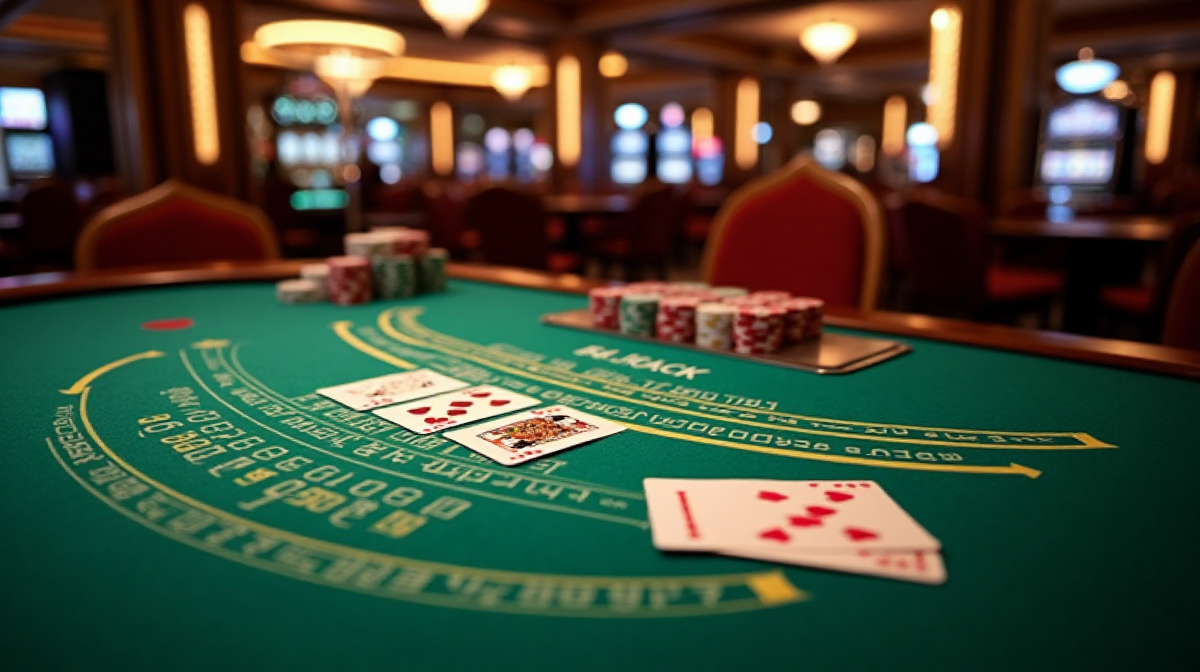Blackjack Rules: A Beginner’s Guide
What is Blackjack?
Blackjack, also known as 21, is a casino game where players compete against the dealer. Its origins trace back to the 18th century in France, evolving from a French card game called Vingt-et-Un (Twenty-One). The objective is simple: to beat the dealer by having a hand value closer to 21 than the dealer’s, without exceeding 21. Many online platforms, like those offering a 22 bet experience, now provide access to a wide range of blackjack games.
Why is Blackjack Popular?
Blackjack’s enduring popularity stems from a combination of factors. It boasts one of the lowest house edges in the casino, meaning players have a relatively good chance of winning compared to other games. However, unlike pure games of chance, blackjack incorporates a significant skill element. Players can make strategic decisions – whether to hit, stand, double down, or split – that directly impact their odds. The thrill of applying strategy, combined with the prospect of winning, makes blackjack incredibly engaging. You’ll often see the 22 bet logo associated with popular blackjack tournaments.
Basic Terminology
Understanding the language of blackjack is crucial. The “Dealer” represents the casino, managing the cards and payouts. “Players” are those wagering against the dealer. Hit means requesting another card, while Stand means ending your turn with your current hand. Going over 21 results in a Bust, automatically losing your bet.
The Value of Cards
Card Rankings
A standard 52-card deck is used in blackjack. Cards are ranked in order from Ace (highest) down to 2 (lowest). The ranking is: Ace, King, Queen, Jack, 10, 9, 8, 7, 6, 5, 4, 3, 2.
Numerical Values
The numerical value of cards is straightforward. Cards 2 through 10 are worth their face value. Jack, Queen, and King (face cards) are each worth 10. The Ace is unique, possessing a value of either 1 or 11, depending on which value benefits the hand the most.
Understanding Soft vs. Hard Hands
A “Hard Hand” is any hand where the Ace is counted as 1, or there’s no Ace at all. For example, 10+7 is a hard 17. A “Soft Hand” is one where the Ace is counted as 11 without causing the hand to bust. For example, Ace+6 is a soft 17. The flexibility of a soft hand is a key element of blackjack strategy. You might find opportunities to practice this on a platform offering 22 bet services.

Gameplay – How a Round of Blackjack Works
The Deal
A round begins with each player placing a bet. The dealer then deals two cards face up to each player and two cards to themselves – one face up and one face down (the “hole card”).
Player’s Turn
Starting with the player to the dealer’s left, each player has several options:
Hitting
Requesting another card to increase your hand value. You can hit multiple times until you choose to stand or bust.
Standing
Declining to take any more cards, ending your turn with your current hand.
Doubling Down
Doubling your initial bet and receiving only one additional card. This is typically done when you have a strong starting hand.
Splitting Pairs
If you’re dealt a pair (two cards of the same rank), you can split them into two separate hands, each requiring a bet equal to your initial wager.
Dealer’s Turn
Once all players have completed their turns, the dealer reveals their hole card. The dealer must follow specific rules: they must hit on any hand totaling 16 or less and stand on any hand totaling 17 or more. This can create opportunities for players to win, even with a seemingly weaker hand. Understanding the blackjack rules is key to success.
Determining the Winner
The winner is determined by comparing hand values. The hand closest to 21 without exceeding it wins. If the player’s hand exceeds 21, they automatically bust and lose their bet. If the dealer busts, all remaining players win.
Blackjack Payouts & Odds
Standard Payouts
A winning hand typically pays 1:1 (even money). A Blackjack – an Ace and a 10-value card dealt as your initial two cards – usually pays 3:2.
Understanding the House Edge
The house edge represents the casino’s average profit on each bet. In blackjack, the house edge can be relatively low, especially when using basic strategy.
Insurance Bet
If the dealer’s upcard is an Ace, players are offered “Insurance.” This is a side bet that the dealer has blackjack. It pays 2:1 if the dealer has blackjack, but you lose your insurance bet if the dealer doesn't. It’s generally not recommended as the odds are unfavorable.
Side Bets
Many casinos offer optional side bets, such as Perfect Pairs or 21+3. These bets have higher payouts but also higher house edges.
Basic Blackjack Strategy
What is Basic Strategy?
Basic strategy is a mathematically derived set of guidelines that tells you the optimal action to take in every possible situation, minimizing the house edge.
Basic Strategy Charts Explained
These charts show you whether to hit, stand, double down, or split based on your hand and the dealer’s upcard. Simplified examples demonstrate that with a hand of 12-16 against a dealer’s 2-6, you should stand; against a dealer’s 7 or higher, you should hit.
When to Hit, Stand, Double Down, and Split
Generally, hit if your hand is 11 or less, or 12-16 against a dealer's 7 or higher. Stand on 17 or more. Double down on 11, and split Aces and 8s.
Blackjack Etiquette & Tips
Proper Etiquette at the Table
Avoid touching your cards after the deal, and signal your intentions clearly (e.g., wave your hand to hit, place chips on the table to double down).
Bankroll Management
Set a budget before you start playing and stick to it. Avoid chasing losses.
Common Mistakes to Avoid
Don’t take insurance unless you’re counting cards. Don’t split 10s. Don’t hit on 21.
Tips for Beginners
Start with small bets. Practice online using free games. Learn basic strategy. Many platforms, like those offering a 22 bet experience, offer free play modes.

Variations of Blackjack
Single Deck vs. Multiple Deck Blackjack
Single-deck blackjack generally has better odds for players, but it’s less common. Multiple-deck games are more prevalent.
European Blackjack vs. American Blackjack
European blackjack typically has different rules, such as the dealer only receiving one card, and players being unable to double down after splitting.
Other Popular Variations
Blackjack Switch allows players to switch the top cards of their two hands. Spanish 21 uses a 48-card deck and has different bonus payouts.
Resources for Further Learning
Recommended Websites & Books
Numerous websites and books offer comprehensive blackjack strategy guides.
Blackjack Strategy Trainers
These tools allow you to practice basic strategy and improve your decision-making skills.
Online Blackjack Games
Practicing online is a great way to learn the game and refine your strategy. You can even find opportunities to play on sites offering 22 bet options. Knowing the blackjack meaning and rules is essential for success.

